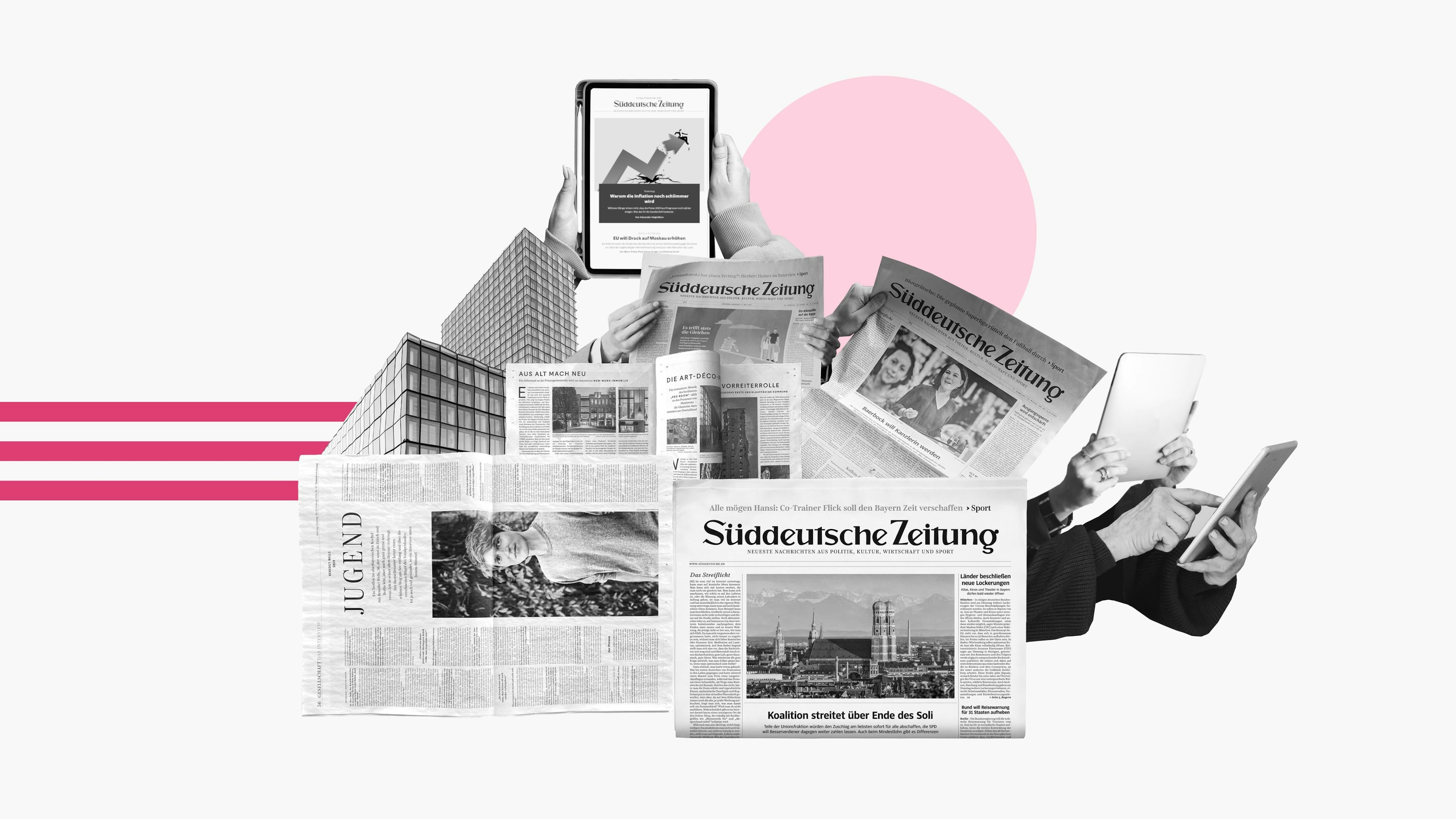
Finite Yet Dynamic: How the Digital Edition Adds Value in Your Newsroom
The newspaper – a product that has long been an integral part of modern society. Its presence is as natural as a morning coffee, as consistent as a sunrise. When one says the word “newspaper”, a very clear image comes to mind: a printed publication on current events delivered in a bundle of (mostly) black and white sheets of paper. Therefore, in the case of the “news-paper”, its identity is in many ways as contingent on its medium as it is on its content. So it is no surprise that publishers feel some resistance as the news publishing domain – along with almost every industry – undergoes digital transformation, and as the printed paper transitions into a web-based news source. What is a newspaper without the paper? To make such a dramatic change to a tangible staple of daily life would surely create resistance in its readers. How can this cultural shift brought about by technology be made more palatable for publishers and readers alike?
Despite some straightforward benefits of digitalising one’s newspaper business model – like faster delivery of the news product and greater flexibility in editing stories on the fly as they develop – the move to providing high-quality digital, web-based news on par with its paper counterpart is often not so straightforward. Moreover, with Google and other Big Tech companies having unprecedented insight into (and control over) readers’ interests, consumption habits and, ultimately, lives, publishing companies have had to shift their business model into a domain that they don’t run. Nevertheless, digital delivery for publishers is the only way to stay ahead as the world becomes increasingly digitalised. So how can news publishers take their product into the digital age while honouring their pre-digital legacy?
Many news publishers offer “ePapers”, PDF replicas of their print offering. As a digital reproduction, an ePaper offers exactly what the print newspaper does, yet is able to be distributed more swiftly and broadly than print (no postman needed) while reducing paper consumption. On the other hand, they have the same limitations as print: fixed space, lack in formatting flexibility, inability to update until the next cycle, no capability for interactive media and more.
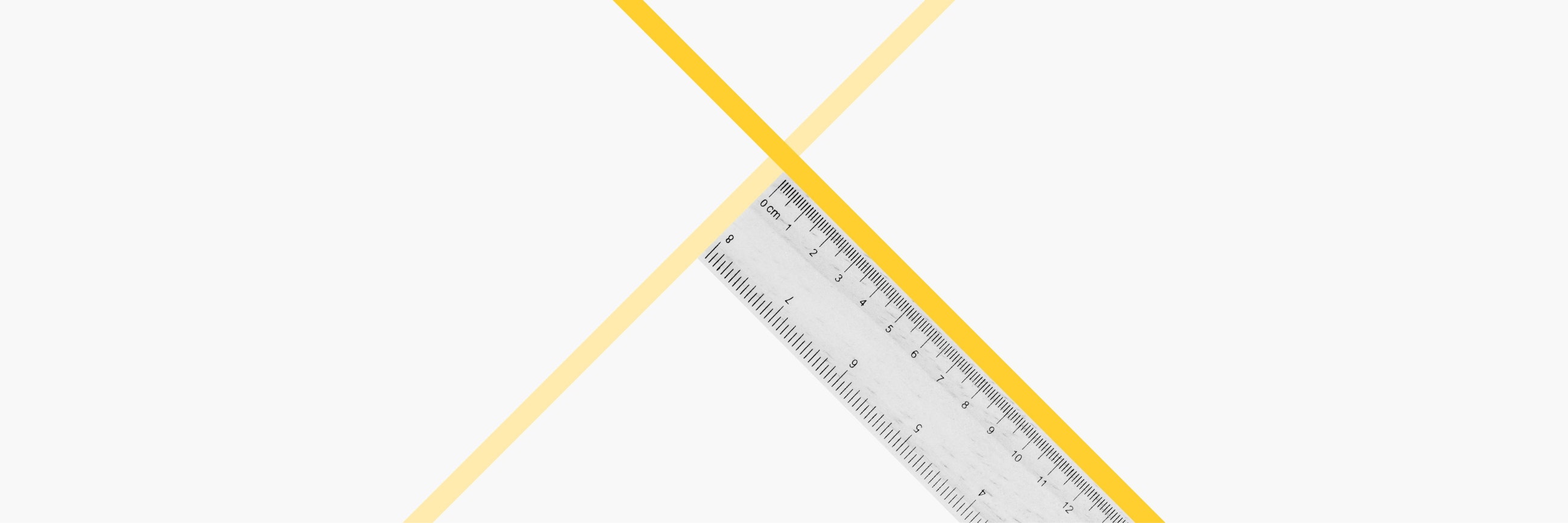
ePaper: Lack in formatting flexibility
Most significantly, ePapers could be used as an alternative, promoted when readers choose to cancel their print subscription in favour of a digital option, often driven by the desire to reduce costs and paper consumption. In fact, ePapers are offered as “the same as print, only cheaper”. For the reader that is. When it comes to the production of a traditional ePaper, it is generated from the material that is sent to the printing presses, i.e. it shares the same process as the print newspaper, and therefore is distributed only once the print material is ready. In this way, the ePaper doesn't have any significant value-add beyond being digitally available.
At Livingdocs, we consider ourselves a digital-first company. However, we also understand what publishers and readers alike appreciate about print, particularly the thoughtful selection of stories in an edition (rather than a free-for-all of ticker-like updates). That's why we now offer features in our core product that allow customers to create and manage a Digital Edition.
Digital Edition Cover (left) vs. ePaper Cover (right) // Flexible and Dynamic vs. Fixed and Static
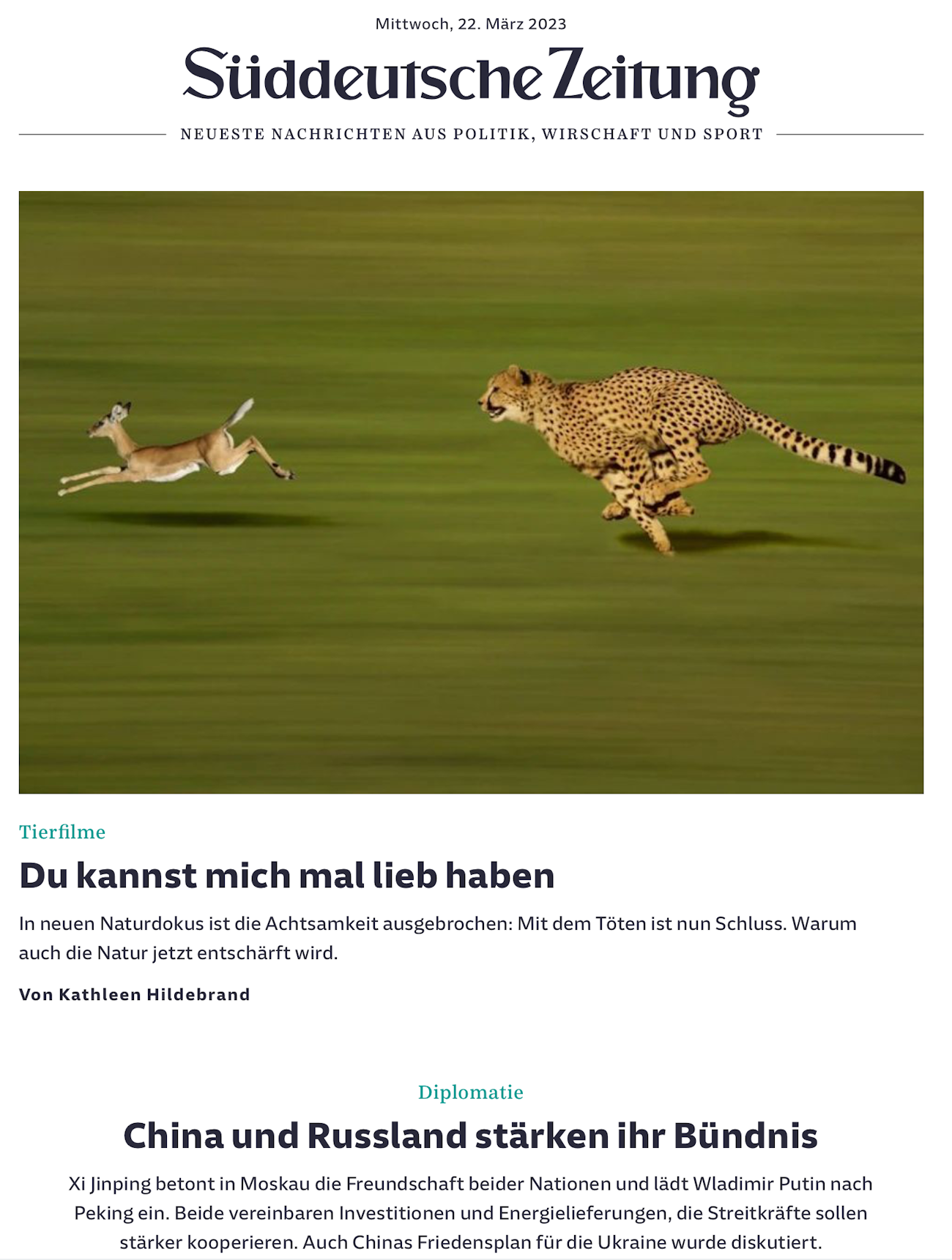
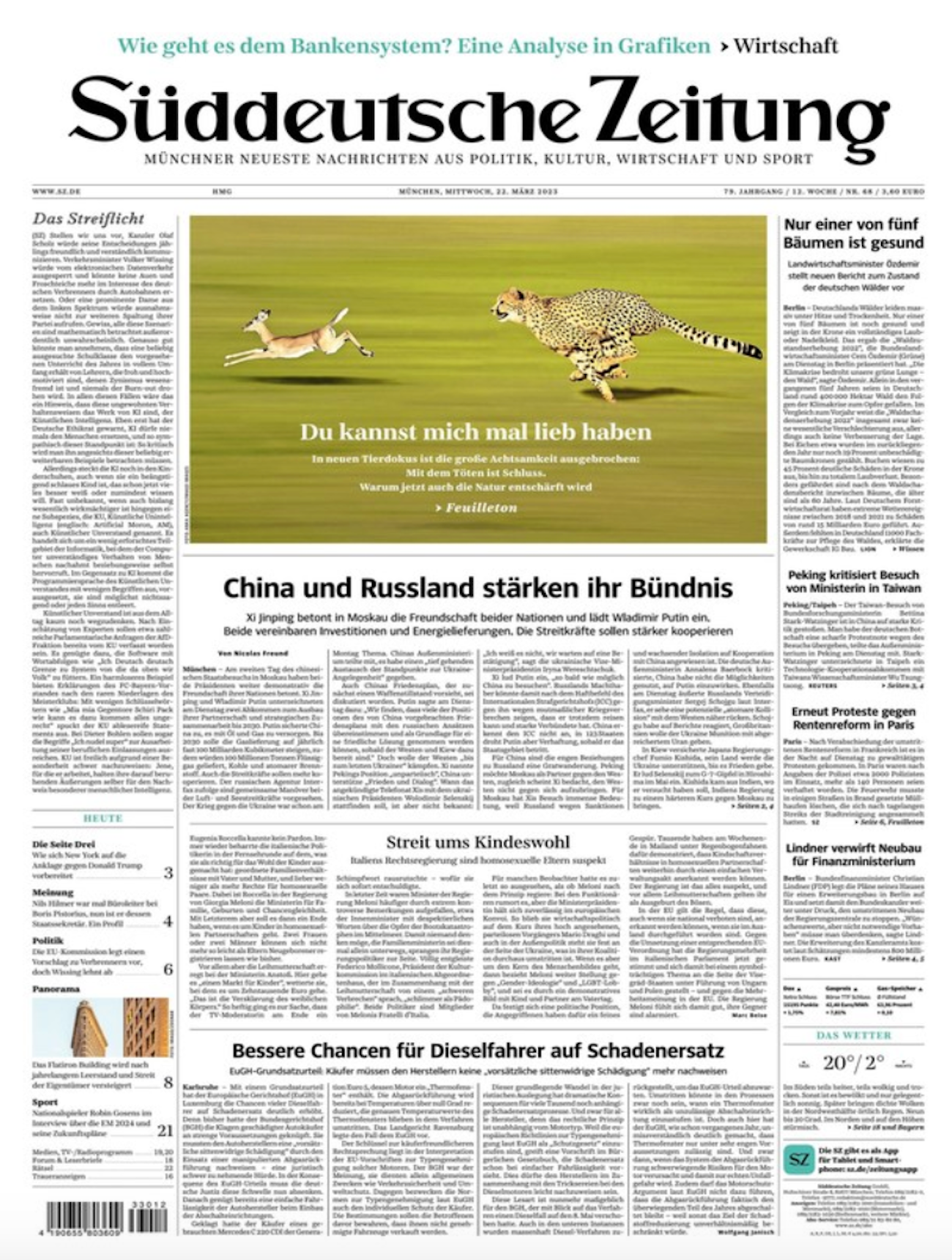
Both finite and dynamic, the Digital Edition provides readers and journalists alike with a value-added experience. It is flexible without being arbitrary. In this web-based product, editors present a carefully curated selection of stories, which can be updated as they develop even after the product has been delivered. The Digital Edition also offers greater flexibility in its aesthetic thanks to the graphic potential for high-resolution images and interactive elements.
The features now offered in Livingdocs which enable users to create and manage a Digital Edition were developed in close collaboration with our customer Süddeutsche Zeitung and their already established Digital Edition product. Julia Woolverton, Product Manager of the Digital Edition (Digitale Ausgabe) at Süddeutsche Zeitung, clarifies the product strategy for the Digital Edition: “The product started as an upgrade to the static ePaper edition and as an add-on to our portfolio in the form of an iPad-optimised app.” Now, the Digital Edition is Süddeutsche Zeitung’s premium product for readers who prefer a finite, curated news package rather than a fast-paced online news stream. It can be seen as an alternative product for ePaper users that want an experience beyond what a PDF could provide: a practical way of consuming the curated content of a printed newspaper in a digital format that is more handy than print yet more flexible than an ePaper.
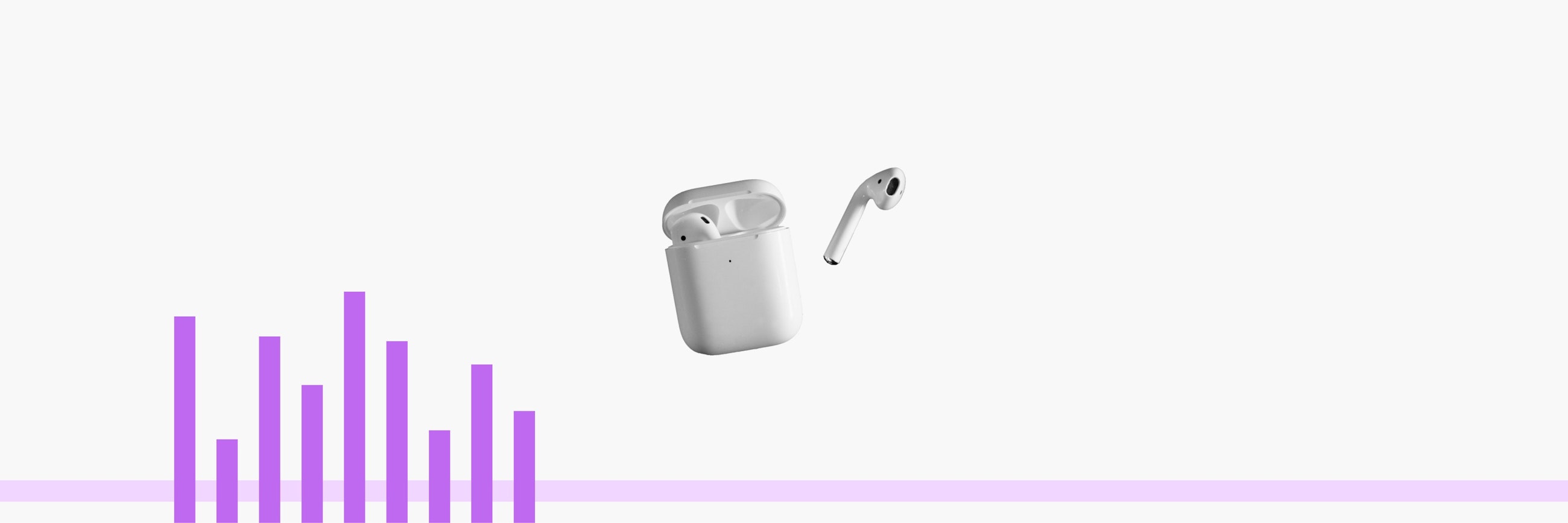
Digital Edition: Allows for storytelling, video and other interactive elements
Woolverton elaborates that the Digital Edition also serves the aim of “allowing long-term subscribers to reduce paper usage while enjoying the comfort and convenience of a digital product: no postman, constant accessibility, handy format, interactive content enrichments, articles updates and early access.” At Süddeutsche Zeitung, while until now the Digital Edition is based on the content of the printed paper, it allows for interactive elements, such as audio, video and storytelling, resulting in an optimised experience in a finite product. Rather than having the look of a print newspaper, it rather resembles a website, albeit streamlined thanks to the tighter selection of articles (usually ranging between 70-100).
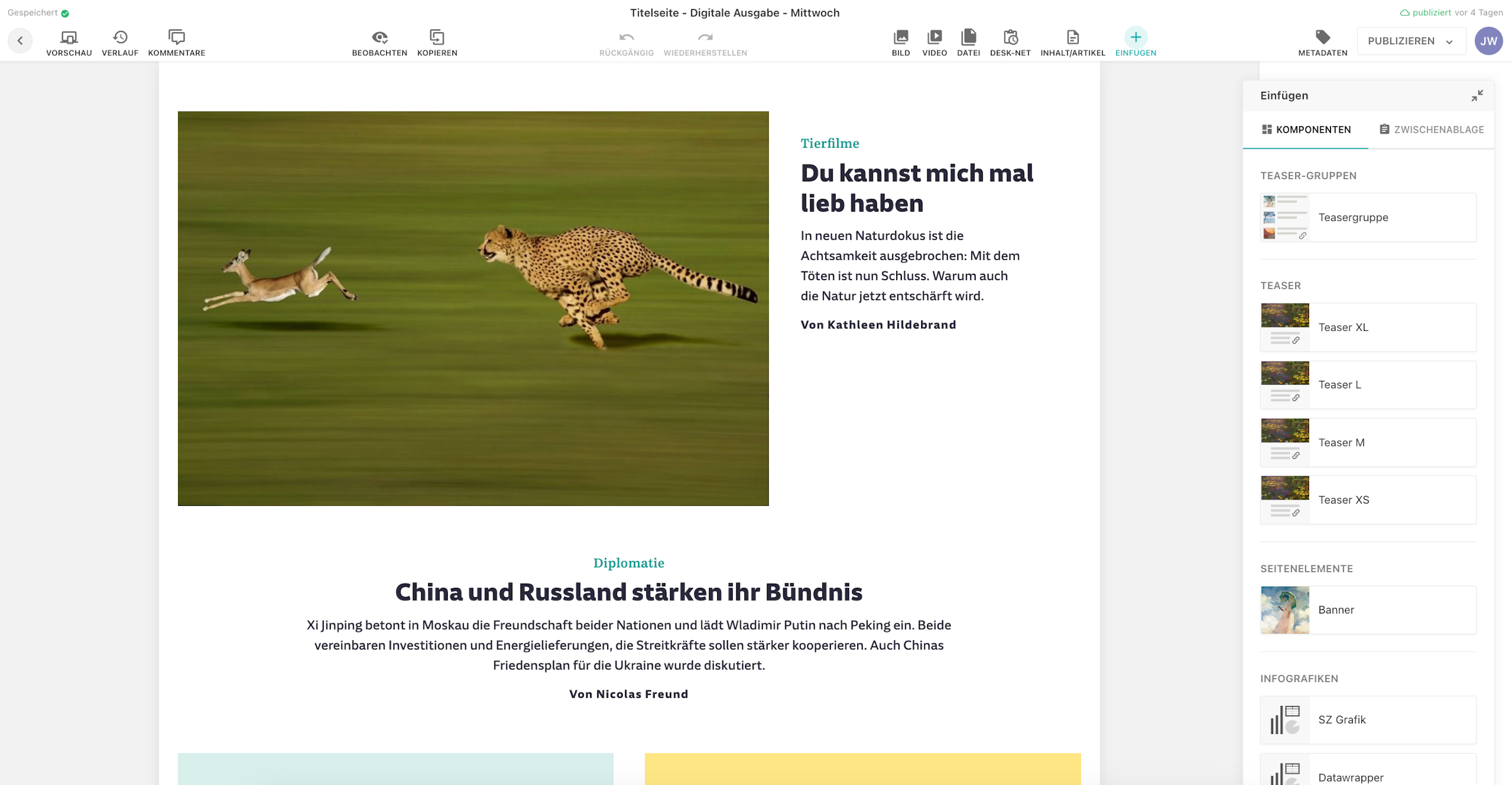
Digital Edition at Süddeutsche Zeitung supported by the intuitive Livingdocs User Interface
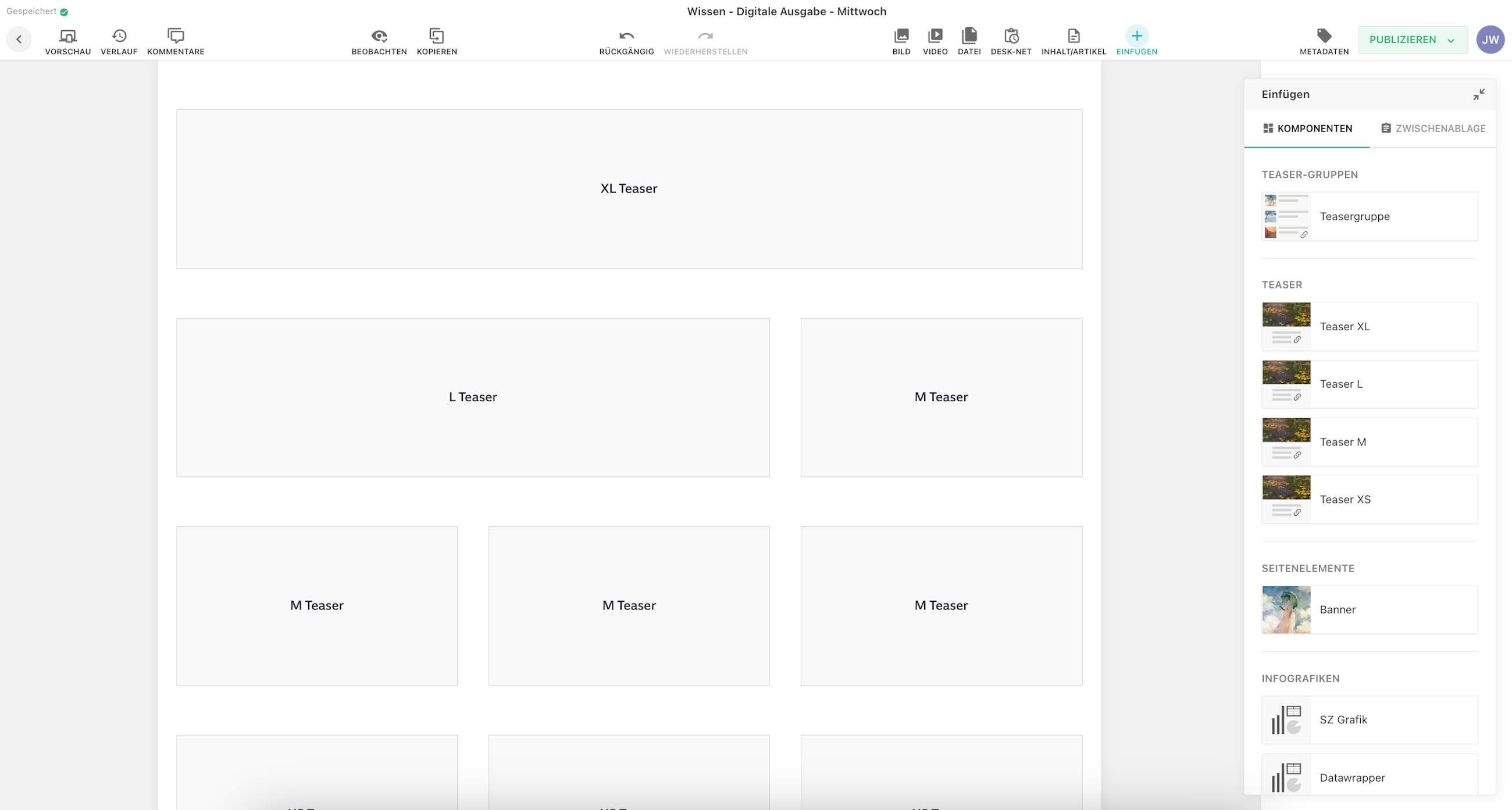
Digital Edition: Fully flexible layout to best suit your stories as they develop
Along with the content, the layout is entirely flexible, and can be updated several times after it has been released. To note, the delivery mechanism of the Digital Edition is relatively cheap and reliable, as it uses a process called static rendering where all webpages are precomputed and stored as simple files rather than generated every single time a user views them. The Digital Edition is also available offline, with only minor functionality downgrades in regard to interactive content.
The Digital Edition appeals to a similar readership as that of ePapers, in that it caters to those who prefer to receive a prepared collection of articles once per day, compared to those who like to scroll a newsfeed multiple times a day, zipping through the material in hopes to find what is really newsworthy. Unlike ePapers, the Digital Edition allows for a greater variety of media, including videos and interactive content. Moreover, the Digital Edition can include web articles that have already been published. Significantly, as its workflow is not dependent on the print product process, the Digital Edition can be produced and distributed with relative immediacy compared to an ePaper.

Digital Edition: Continuous updating capability
During the development process, we [SZ] performed some user tests. The latest involved seven editors whose task it was to re-produce the latest daily Digital Editions throughout the week with production content on the Livingdocs staging system. Though there were some aspects that needed adapting to suit SZ’s editing process, the collaborative process was fruitful and everyone was excited to work with the new CMS, saying it is so much more intuitive, efficient and fun to work with than with our old system! We can’t wait to use it on daily basis!

Julia Woolverton, Product Manager "Digitale Ausgabe"
For publishers who are focused on truly harnessing the potential of the web, the static ePaper has less long-term value. The Digital Edition, however, is dynamic and will keep up with the rapid pace of digitalisation and innovation in terms of its creation, delivery and quality of reader experience. As publishers continue digitally transforming their products and workflows, the Digital Edition won’t slow them down: it is created through a digital-based workflow based on high-value print articles and, due to the flexibility and possibility of the digital format, can include select web-based content all packaged in a heightened, interactive experience for readers. All it does is add value.
By offering the functionality to create and manage a Digital Edition, we meet the needs of publishers and readers alike. We enable publishers to give their readers their curated, daily edition, with the added benefit of responsiveness and interactivity potential. This finite product also serves as an antidote to the constant “refresh and scroll” nature of digital news.
The addition of capabilities for users to create and manage a Digital Edition as part of the core Livingdocs product also speaks to our trajectory of expanding the functionality of our product and going beyond “just” a CMS and Editor into a more broad offering – a true publishing hub – complete with finite products and a planning system. It is with this holistic offering that we aim to fulfil our mission to bring value to news publishers playing in the digital world, and ultimately to empower journalists in creating better journalism.